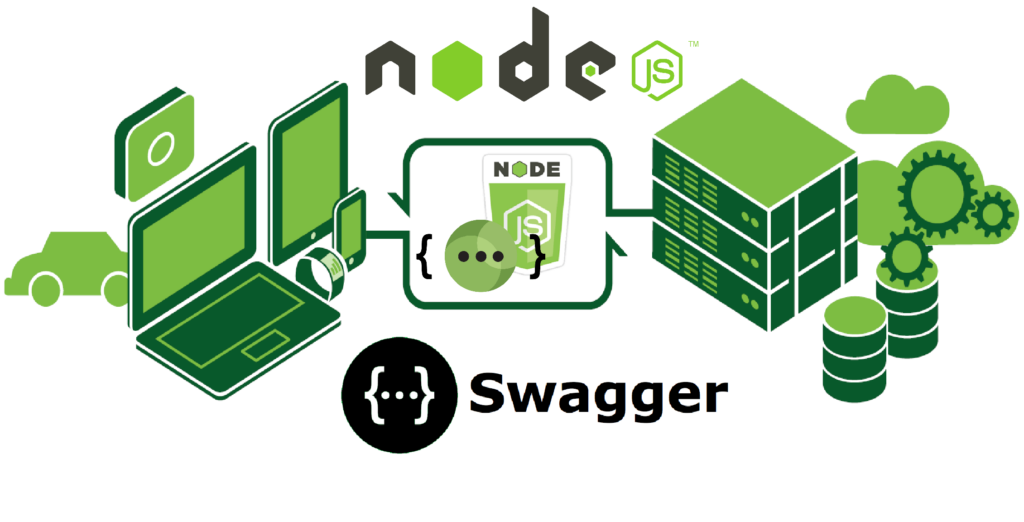Unlocking the powers of Node.js Native Transform API: making objects observable with raw node.js

I. Introduction
Node.js is a powerful platform for building scalable and high-performance applications, thanks to its event-driven architecture and non-blocking I/O model. One of the lesser-known features of Node.js is the NativeTransform API, which enables developers to make any object observable and reactive. This API allows you to transform objects into streams of data, which can be piped to other streams or transformed in real-time.
In this guide, we’ll explore how to leverage the NativeTransform API to make any object observable in Node.js. We’ll start with an overview of observables and reactive programming, followed by a deep dive into the NativeTransform API and its core concepts. We’ll also cover the use cases for observables and show you how to create your own custom observables using the NativeTransform API.
Whether you’re a seasoned Node.js developer or just getting started with the platform, this guide will provide you with the knowledge and tools you need to unlock the power of the NativeTransform API and take your applications to the next level. So let’s dive in and discover how to make any object observable with raw Node.js!
II. What is the Node.js NativeTransform API?
Node.js is a powerful tool for building server-side applications and has become increasingly popular over the years. One of its strengths is its ability to manipulate data streams using the built-in Transform API. However, this API has some limitations, which can make it difficult to work with in certain situations.
This is where the Node.js NativeTransform API comes in. It provides a low-level interface that allows you to manipulate data streams in a more flexible and efficient manner. With the NativeTransform API, you can create custom transforms that are tailored to your specific needs, and you can even make any object observable, allowing you to monitor changes in real-time.
In this guide, we will take a closer look at the Node.js NativeTransform API and explore its capabilities in depth. We’ll cover everything from the basics of data streams and the Transform API to the more advanced features of the NativeTransform API, including how to create custom transforms and make objects observable. By the end of this guide, you’ll have a solid understanding of the NativeTransform API and be able to harness its power to create more efficient and flexible data streams in your Node.js applications.
A. Definition and explanation of the API
The Node.js NativeTransform API is a powerful tool for making any object observable in Node.js. But before diving into the details of how to use this API, it’s important to first understand what exactly an API is.
An API, or Application Programming Interface, is a set of rules and protocols that defines how different software components should interact with each other. In simpler terms, an API acts as a “middleman” between two different pieces of software, allowing them to communicate with each other in a standardized way.
In the context of Node.js, the NativeTransform API provides a set of classes and functions that allow developers to transform data streams in various ways. Specifically, the NativeTransform API is designed to make it easy to create “transform” streams, which take input data, modify it in some way, and output the modified data.
One of the key benefits of using the NativeTransform API is that it allows developers to create highly efficient and performant data transformation pipelines. Because the API is built directly into Node.js, it can take advantage of Node’s underlying asynchronous I/O model to process data streams quickly and efficiently.
Overall, the NativeTransform API is an essential tool for any developer working with Node.js data streams. By leveraging this API, developers can create powerful data transformation pipelines that are both highly efficient and flexible.
B. Differences between the Transform API and other Node.js APIs
While the Transform API is a powerful tool for making objects observable in Node.js, it is important to note that it differs from other Node.js APIs in a few key ways. Here are some of the most significant differences:
Transform streams vs. regular streams: The Transform API provides a specific type of stream called a transform stream, which allows you to modify data as it passes through the stream. Regular streams, on the other hand, simply pass data through without modifying it.
Duplex streams vs. transform streams: Duplex streams are another type of stream in Node.js that allow both reading and writing. While transform streams can technically be duplex streams, they are primarily designed for transforming data and may not always be suitable for both reading and writing.
EventEmitter vs. Transform API: The EventEmitter API in Node.js provides a way for objects to emit events that can be listened to by other parts of your application. While this can be a useful way to make objects observable, it does not offer the same level of flexibility as the Transform API.
Object.observe vs. Transform API: The Object.observe method was a built-in feature of JavaScript that allowed objects to be observed for changes. However, this method has been deprecated and is no longer supported in modern browsers. The Transform API offers a way to achieve similar functionality in Node.js.
Overall, the Transform API offers a unique set of features that make it a powerful tool for making objects observable in Node.js. While it differs from other Node.js APIs in some important ways, it provides a flexible and efficient way to transform data as it passes through streams.
C. Advantages of using the Transform API
The Transform API provides several advantages over other approaches to data transformation in Node.js. Here are a few key advantages:
Streamlined data processing: The Transform API allows you to easily process data as it flows through a stream, without the need for complex buffering or parsing logic. This can make your code simpler and more efficient.
Flexibility: The Transform API is highly flexible and can be used to transform data in a wide variety of ways. For example, you can use it to filter, map, or modify data in real-time as it flows through a stream.
Reusability: Because the Transform API is designed to be modular, you can create a custom transform stream that can be reused in multiple parts of your codebase. This can save you time and effort in the long run.
Backpressure handling: The Transform API automatically handles backpressure, which is when data is being produced faster than it can be consumed. This ensures that your code can handle large amounts of data without crashing or running out of memory.
Better error handling: The Transform API provides better error handling than other approaches to data transformation. For example, it automatically emits error events if there are issues with the data being processed, allowing you to handle these errors more easily and gracefully.
Overall, the Transform API provides a powerful and flexible way to process and transform data in Node.js. Whether you are building a streaming data pipeline or simply need to transform data on-the-fly, the Transform API is an essential tool to have in your Node.js toolbox.
III. Making Any Object Observable with Raw Node.js
Node.js is a powerful platform for building fast, scalable and highly performant applications. One of the key features that makes Node.js so versatile is its event-driven architecture, which allows developers to build highly responsive applications that can handle a large number of requests concurrently. In order to take full advantage of this architecture, it’s important to understand how to make objects observable in Node.js.
In this article, we will explore the NativeTransform API in Node.js, which provides a powerful way to make any object observable. We will walk through the step-by-step process of creating a custom observable object using raw Node.js, and demonstrate how to subscribe to and receive notifications from the observable object.
Whether you’re building a small-scale application or a large-scale distributed system, understanding how to make objects observable can help you build more responsive and performant applications. So, let’s dive in and explore the power of the NativeTransform API in Node.js!
"use strict";
/**
*
* @module ObservableTransform
* @kind class
*
* @extends Transform
* @requires Transform
* @classdesc ObservableTransform class
*/
class ObservableTransform extends require("stream").Transform {
constructor(...arrayOfObjects) {
super({ objectMode: true, encoding: "utf-8", autoDestroy: true });
arrayOfObjects.forEach(option => {
if(Object.keys(option).length > 0){
Object.keys(option).forEach((key) => {
if(!this[key]) this[key] = option[key];
})
}
});
this.setMaxListeners(Infinity);
}
/**
* @name _transform
* @function
*
* @param {Buffer|String|Any} chunk The Buffer to be transformed, converted from the string passed to stream. write(). * If the stream's decode strings option is false or the stream is operating in object mode,
* the chunk will not be converted & will be whatever was passed to stream. write().
*
* @param {String} encoding If the chunk is a string, then this is the encoding type.
* If the chunk is a buffer, then this is the special value 'buffer'. Ignore it in that case.
* @param {Function} fn A callback function (optionally with an error argument and data)
* to be called after the supplied chunk has been processed.
*
* @description This function MUST NOT be called by application code directly.
* It should be implemented by child classes and called by the internal Readable class methods only.
*
* @return does not return anything
*
*/
_transform(chunk, encoding = "utf-8", fn) {
this.push(JSON.stringify(chunk));
fn();
}
/**
* @name _flush
* @function
*
* @param {Function} fn A callback function (optionally with an error argument and data)
* to be called after the supplied chunk has been processed.
*
* @description This function MUST NOT be called by application code directly.
* It should be implemented by child classes and called by the internal Readable class methods only.
*
* @return does not return anything
*
*/
_flush(fn) {
fn();
}
/**
* @name _final
* @function
*
* @param {Function} fn A callback function (optionally with an error argument and data)
* to be called after the supplied chunk has been processed.
*
* @description This function MUST NOT be called by application code directly.
* It should be implemented by child classes and called by the internal Readable class methods only.
*
* @return does not return anything
*
*/
_final(fn) {
fn();
}
/**
* @name destroy
* @function
*
* @param {Error} error Error which will be passed as payload in 'error' event
*
* @description Destroy the stream. Optionally emit an 'error' event, and emit a 'close' event (unless emitClose is set to false). After this call, the readable stream will release any internal resources, and subsequent calls to push() will be ignored.
*
* Once destroy() has been called any further calls will be a no-op and no further errors except _destroy() may be emitted as 'error'.
Implementors should not override this method but instead implement readable._destroy().
*
* @return ObservableTransform
*
*/
destroy(error) {}
/**
* @name pipe
* @function
*
* @param {Writable} destination The destination for writing data
*
* @param {Object} options Pipe options
* @param {Boolean} end End the writer when the reader ends. Default: true.
* @description Attaches a Writable stream to the readable, causing it to switch automatically into flowing mode and push all of its data to the attached Writable. The flow of data will be automatically managed so that the destination Writable stream is not overwhelmed by a faster Readable stream.
*
* Returns a reference to the destination stream making it possible to set up chains of piped streams:
Implementors should not override this method but instead implement readable._destroy().
*
* @return {Writable} The destination, allowing for a chain of pipes if it is a Duplex or a Transform stream
*
*/
pipe(destination, options = { end: true }) {}
/**
* @name read
* @function
*
* @param {Number} size Optional argument to specify how much data to read.
*
* @description Pulls some data out of the internal buffer and returns it. If no data is available to be read, null is returned. By default, the data will be returned as a Buffer object unless an encoding has been specified using the readable.encoding() method or the stream is operating in object mode.
The optional size argument specifies a specific number of bytes to read. If size bytes are not available to be read, null will be returned unless the stream has ended, in which case, all of the data remaining in the internal buffer will be returned.
If the size argument is not specified, all of the data contained in the internal buffer will be returned.
The size argument must be less than or equal to 1 GiB.
The readable.read() method should only be called on Readable streams operating in paused mode. In flowing mode, readable.read() is called automatically until the internal buffer is fully drained.
* @return {String|Buffer|null|any}
*
*/
read(size) {}
/**
* @name setEncoding
* @function
*
* @param {String} encoding The encoding to use.
*
* @description sets the character encoding for data to read from the Readable stream.
*
* By default, no encoding is assigned and stream data will be returned as Buffer objects. Setting an encoding causes the stream data to be returned as strings of the specified encoding rather than as Buffer objects. For instance, calling readable.set encoding('utf8') will cause the output data to be interpreted as UTF-8 data, and passed as strings. Calling readable.encoding('hex') will cause the data to be encoded in hexadecimal string format.
The Readable stream will properly handle multi-byte characters delivered through the stream that would otherwise become improperly decoded if simply pulled from the stream as Buffer objects.
*
* @return ObservableTransform The destination, allowing for a chain of pipes if it is a Duplex or a Transform stream
*
*/
setEncoding(encoding) {}
/**
* @name unpipe
* @function
*
* @param {Writable} destination The destination for writing data
*
* @description detaches a Writable stream previously attached using the stream.pipe() method.
*
*If the destination is not specified, then all pipes are detached.
If the destination is specified, but no pipe is set up for it, then the method does nothing.
*
* @return ObservableTransform
*
*/
unpipe(e) {}
/**
* @name unshift
* @function
*
* @param {Buffer|Uint8Array|String|Null|Any} chunk Chunk of data to unshift onto the read queue. For streams not operating in object mode, chunk must be a string, Buffer, Uint8Array or null. For object mode streams, the chunk may be any JavaScript value
*
* @param {String} encoding Encoding of string chunks. Must be a valid Buffer encoding, such as 'utf8' or 'ASCII.
*
* @description Pushes a chunk of data back into the internal buffer. This is useful in certain situations where a stream is being consumed by code that needs to "un-consume" some amount of data that it has optimistically pulled out of the source so that the data can be passed on to some other party
Passing chunk as null signals the end of the stream (EOF) and behaves the same as readable.push(null), after which no more data can be written. The EOF signal is put at the end of the buffer and any buffered data will still be flushed.
The stream.unshift(chunk) method cannot be called after the 'end' event has been emitted or a runtime error will be thrown.
Developers using stream.unshift() often should consider switching to the use of a Transform stream instead. See the API for stream implementers section for more information.
*
* @return ObservableTransform
*
*/
unshift(chunk, encoding) {}
/**
* @name wrap
* @function
*
* @param {Stream} stream An "old style" readable stream
*
* @description Prior to Node.js 0.10, streams did not implement the entire stream module API as it is currently defined. (See Compatibility for more information.)
When using an older Node.js library that emits 'data' events and has a stream.pause() method that is advisory only, the readable.wrap() method can be used to create a Readable stream that uses the old stream as its data source.
It will rarely be necessary to use readable.wrap() but the method has been provided as a convenience for interacting with older Node.js applications and libraries.
*
* @return ObservableTransform
*
*/
wrap(stream) {}
/**
* @name _read
* @function
*
* @param {Number} size Number of bytes to read asynchronously
*
* @description This function MUST NOT be called by application code directly. It should be implemented by child classes and called by the internal Readable class methods only.
*
*All Readable stream implementations must provide an implementation of the readable._read() method to fetch data from the underlying resource.
When readable._read() is called, if data is available from the resource, the implementation should begin pushing that data into the read queue using the this.push(data chunk) method. _read() should continue reading from the resource and pushing data until readable.push() returns false. Only when _read() is called again after it has stopped should it resume pushing additional data onto the queue.
Once the readable._read() method has been called, it will not be called again until more data is pushed through the readable.push() method. Empty data such as empty buffers and strings will not cause readable._read() to be called.
The size argument is advisory. For implementations where a "read" is a single operation, returns data can use the size argument to determine how much data to fetch. Other implementations may ignore this argument and simply provide data whenever it becomes available. There is no need to "wait" until size bytes are available before calling stream.push(chunk).
The readable._read() method is prefixed with an underscore because it is internal to the class that defines it, and should never be called directly by user programs.
* @return does not return anything
*
*/
_read(size) {}
/**
* @name push
* @function
*
* @param {Buffer|Uint8Array|String|Null|Any} chunk Chunk of data to push into the read queue. For streams not operating in object mode, chunk must be a string, Buffer, or Uint8Array. For object mode streams, a chunk may be any JavaScript value.
*
* @param {String} encoding Encoding of string chunks. Must be a valid Buffer encoding, such as 'utf8' or 'ASCII
*
* @description When the chunk is a Buffer, Uint8Array, or string, the chunk of data will be added to the internal queue for users of the stream to consume. Passing chunk as null signals the end of the stream (EOF), after which no more data can be written.
When the Readable is operating in paused mode, the data added with readable.push() can be read out by calling the readable.read() method when the 'readable' event is emitted.
When the Readable is operating in flowing mode, the data added with readable.push() will be delivered by emitting a 'data' event.
The readable.push() method is designed to be as flexible as possible. For example, when wrapping a lower-level source that provides some form of pause/resume mechanism, and a data callback, the low-level source can be wrapped by the custom Readable instance:
*
* @return {Boolean} false if the stream wishes for the calling code to wait for the 'drain' event to be emitted before continuing to write additional data; otherwise true.
*
*/
push(chunk, encoding = "utf-8") {}
/**
* @name pipe
* @function
*
* @param {Writable} destination The destination for writing data
*
* @param {Object} options Pipe options
* @param {Boolean} end End the writer when the reader ends. Default: true.
* @description Attaches a Writable stream to the readable, causing it to switch automatically into flowing mode and push all of its data to the attached Writable. The flow of data will be automatically managed so that the destination Writable stream is not overwhelmed by a faster Readable stream.
*
* Returns a reference to the destination stream making it possible to set up chains of piped streams:
Implementors should not override this method but instead implement readable._destroy().
*
* @return {Writable} The destination, allowing for a chain of pipes if it is a Duplex or a Transform stream
*
*/
pipe(e, options = { end: true }) {}
/**
* @name unpipe
* @function
*
* @param {Writable} destination The destination for writing data
*
* @description detaches a Writable stream previously attached using the stream.pipe() method.
*
*If the destination is not specified, then all pipes are detached.
If the destination is specified, but no pipe is set up for it, then the method does nothing.
*
* @return ObservableTransform
*
*/
unpipe(e) {}
/**
* @name unshift
* @function
*
* @param {Buffer|Uint8Array|String|Null|Any} chunk Chunk of data to unshift onto the read queue. For streams not operating in object mode, chunk must be a string, Buffer, Uint8Array or null. For object mode streams, the chunk may be any JavaScript value
*
* @param {String} encoding Encoding of string chunks. Must be a valid Buffer encoding, such as 'utf8' or 'ASCII.
*
* @description Pushes a chunk of data back into the internal buffer. This is useful in certain situations where a stream is being consumed by code that needs to "un-consume" some amount of data that it has optimistically pulled out of the source so that the data can be passed on to some other party
Passing chunk as null signals the end of the stream (EOF) and behaves the same as readable.push(null), after which no more data can be written. The EOF signal is put at the end of the buffer and any buffered data will still be flushed.
The stream.unshift(chunk) method cannot be called after the 'end' event has been emitted or a runtime error will be thrown.
Developers using stream.unshift() often should consider switching to the use of a Transform stream instead. See the API for stream implementers section for more information.
*
* @return ObservableTransform
*
*/
unshift(chunk, encoding) {}
/**
* @name wrap
* @function
*
* @param {Stream} stream An "old style" readable stream
*
* @description Prior to Node.js 0.10, streams did not implement the entire stream module API as it is currently defined. (See Compatibility for more information.)
When using an older Node.js library that emits 'data' events and has a stream.pause() method that is advisory only, the readable.wrap() method can be used to create a Readable stream that uses the old stream as its data source.
It will rarely be necessary to use readable.wrap() but the method has been provided as a convenience for interacting with older Node.js applications and libraries.
*
* @return ObservableTransform
*
*/
wrap(stream) {}
/**
* @name _destroy
* @function
*
* @param {Error} error A possible error..
*
* @param {Function} fn A callback function that takes an optional error argument.
*
* to be called after the supplied chunk has been processed.
*
* @description The _destroy() method is called by writable.destroy(). It can be overridden by child classes but it must not be called directly.
*
* @return does not return anything
*
*/
_destroy(error, fn = () => {}) {}
}
module.exports = ObservableTransform;






 and then
and then
Responses